
| “History is a set of lies that people have agreed upon. Even when I am gone, I shall remain in people’s minds the star of their rights, my name will be the war cry of their efforts, the motto of their hopes.” |
| Napoleon Bonaparte |
Find part one of “300 Years of Lies” here.
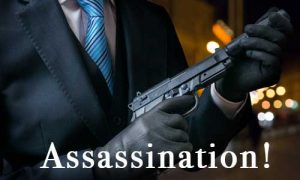
Follow the money and you’ll uncover the truth. In this series of four articles, I’m going to list some of the largest lies and the background to them. Banksters and governments together have wound a web of intrigue that is so unbelievable that the general public is slowly coming around to just that conclusion: They are so unbelievable that they are probably true. Indeed, they are.
We’re on the cusp of a major revolution that will uncover many, if not most, of the enormous lies that have allowed the “elite few” to become super-rich and ultra powerful.
The Lies and Warnings (cont’d)
Napoleon (poisoned May 5, 1821)
Lie: Napoleon was a tyrant who started the Napoleonic Wars.
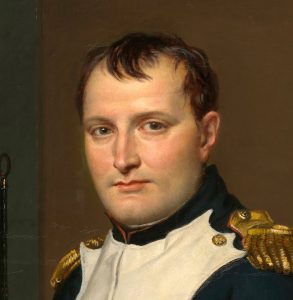 The French Revolution in 1789 left France in bankruptcy, mostly due to over fifty years of wars. This opened the door for one of the greatest commanders in history to rise to power.
The French Revolution in 1789 left France in bankruptcy, mostly due to over fifty years of wars. This opened the door for one of the greatest commanders in history to rise to power.
“One has only to consider what loans can lead to in order to realize their danger. Therefore I would never have anything to do with them and have always striven against them.” — Napoléon Bonaparte
One of the first things Napoléon did when he came to power in 1799 was to take control of the banking system. He created the Banque de France, which replaced the fifteen, mostly Jewish, private banks which had been charging extremely high rates of interest leading up to the French Revolution (1789-99).
Under Napoleon (emperor 1804-15), in the absence of compounding interest from central bankers beyond the borders of France, the country thrived. When Napoleon took over the creation of France’s money, taxes on the citizens of France were dramatically reduced, and he made the French franc the most valuable currency in Europe.
France no longer participated in the London financial markets and this upset the Rothschild family, who were by now entrenched within the Bank of England.
In 1803, England, under the direction of her international bankers (the Rothschilds) provided funds required to Austria, Prussia, Russia, Spain, and Sweden to wage war against Napoleon. Napoleon had simply refused to sign a trade treaty with England the year before.
The basis for the Rothschild family fortune was laid during the latter stages of the Napoleonic Wars. The turning point was their involvement in the Battle of Waterloo, which led to their deceitful manipulation of the British stock market after Napoleon was soundly defeated in this iconic battle. It was the underhanded way this family acted that became a good indication of what was to follow right through to today. The Rothschild family has become the richest family in the world and is behind most of the wars that take place today, as well as other nefarious money-making schemes around the world.
You can find the story of how they duped the British here.
Assassination Abraham Lincoln (April 15, 1865)
Lie: Lincoln was assassinated by a lone assassin for the Confederate cause.
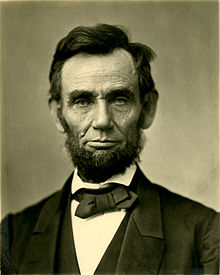 In 1862, Congress authorized the Treasury to print $150 million worth of bills of credit and put them into circulation as money to pay government expenses. They were printed with green ink and became known as “greenbacks.” By the end of the war, $432 million in greenbacks had been printed.
In 1862, Congress authorized the Treasury to print $150 million worth of bills of credit and put them into circulation as money to pay government expenses. They were printed with green ink and became known as “greenbacks.” By the end of the war, $432 million in greenbacks had been printed.
The impetus for the creation of fiat money (greenbacks) to pay for the cost of the civil war originated in Congress, but President Abraham Lincoln was a very enthusiastic supporter:
“It would appear that Lincoln objected to having the government pay interest to the banks for money they create out of nothing when the government can create money out of nothing just as easily and not pay interest on it.”—The Creature from Jekyll Island, G. Edward Griffin
“Lincoln’s defiance of Lionel de Rothschild and his uncle James resulted in his assassination on the night of April 15, 1965 by John Wilkes Booth at the behest of the Rothschilds local agent named Rothberg.”—A History of Central Banking, Stephen Milford Goodson
While Goodson makes a bit of a leap in assigning blame without specifics to back it up, it is known that Booth was a British spy. He had also been a member of the Knights of the Golden Circle, which was linked to the assassination. We also know that one million dollars in gold was sent from the Bank of England to the Bank or Montreal in Canada for the purposes of funding a second civil war, and that Booth knew the controller of that bank account.
We also know that the current US Secretary of War, Edwin M. Stanton covered up most of the facts about the assassination at the time, and it was decades later that some of these facts came to light.
Assassination of James Garfield (Sept. 19, 1881)
Lie: President Garfield was assassinated by a lone, disgruntled assassin.
The bank runs of the second half of the 19th century (1873, 1884, 1890-91, 1893-4, 1897, 1903) made President James Garfield so angry that he issued a statement on March 4, 1881:
“Whosoever controls the volume of money in any country is absolute master of all industry and commerce … And when you realize that the entire system is very easily controlled, one way or another, by a few powerful men at the top, you will not have to be told how periods of inflation and depression originate.”—A History of Central Banking, Stephen Milford Goodson
Two weeks after his made that statement, President Garfield was gunned down by Charles J. Guiteau, who apparently was ticked off at not having received a diplomatic posting.
“At his trial, the hidden hand of Rothschild was revealed when Guiteau claimed that ‘important men in Europe put him up to the task, and had promised to protect him if he were caught.’”—A History of Central Banking, Stephen Milford Goodson
The Rise of the B.I.S.
Lie: That the Bank of International Settlements provides money for the G7 nations (in order to create international monetary stability).
 From the early 1900s, a group of central bankers, the true “elite” of the world, the Rothschild family being at the core, have been conspiring to create one shared financial system, with a vision to subjugate countries around the world to the dictates of this global cartel, housed within the Bank of International Settlements.
From the early 1900s, a group of central bankers, the true “elite” of the world, the Rothschild family being at the core, have been conspiring to create one shared financial system, with a vision to subjugate countries around the world to the dictates of this global cartel, housed within the Bank of International Settlements.
Carroll Quigley, mentor to Bill Clinton and member of the Council on Foreign Relations, is often quoted with open admissions to the general scheme:
“The powers of financial capitalism had (a) far-reaching aim, nothing less than to create a world system of financial control in private hands able to dominate the political system of each country and the economy of the world as a whole. This system was to be controlled in a feudalist fashion by the central banks of the world acting in concert, by secret agreements arrived at in frequent meetings and conferences. The apex of the systems was to be the Bank for International Settlements in Basel, Switzerland; a private bank owned and controlled by the world’s central banks which were themselves private corporations. Each central bank… sought to dominate its government by its ability to control Treasury loans, to manipulate foreign exchanges, to influence the level of economic activity in the country, and to influence cooperative politicians by subsequent economic rewards in the business world.” – Carroll Quigley, Tragedy And Hope
There are only a few countries that still exist outside this financial tentacle: Syria, Iran, North Korea, and Cuba. These are the vilified nations of the world.
Europe was an early trial version of this New World Order (a group of countries with one central bank and one currency), but you can see it starting to self-destruct. Britain leaving was the second tear in the financial fabric that binds them together, after Greece, which still seems to be in self-denial. But it won’t be long until it leaves, as well. Other countries are beginning to see the end in sight.
The Bank of International Settlements has their “hooks” into all G7 nations, charging interest for lending them money that these countries could all be creating for themselves interest free. This is the crux of the problem with western economies, who are going bankrupt one-by-one as these central bankers suck the life out of them by racking up debt that will never be paid back, while siphoning off trillions of dollars of interest payments.
Formation of the The Federal Reserve (1913)
Lie: That the Federal Reserve is a United States government institution.
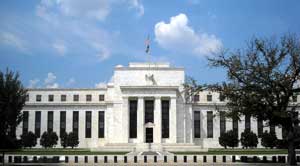 The creation of the Federal Reserve is well-documented in “The Creature from Jekyll Island,” by G. Edward Griffin. I highly recommend it. You can find a link on my Recommended Books page.
The creation of the Federal Reserve is well-documented in “The Creature from Jekyll Island,” by G. Edward Griffin. I highly recommend it. You can find a link on my Recommended Books page.
The Jekyll Island Hunt Club was a property off the coast of Georgia, owned by J.P.Morgan. In the fall of 1910, six men boarded a rail car on their way to a duck hunting holiday. It was an 800 mile journey through Atlanta, Georgia, then Savannah, to the small town of Brunswick—and a resort on Jekyll Island. The shades on the rail car were pulled shut all the way and the participants were on a first-name-only basis, so that attending servants would no know who they were.
For nine days, this small group met in secret to plan out the creation of a central banking “cartel” for the United States that is still in existence today, of course. This was the beginning of the Federal Reserve System, which allegedly has connections to the Rothschild family through its members. Although Senator Aldrich hosted the meeting, the credit for putting it all together has been attributed to Paul Warberg, who was a partner in Kuhn, Loeb & Co., the Rothschild’s main American banking operation after the civil war.
They changed the name of the bill from the Aldrich Bill to the Federal Reserve Act and brought it to the floor of Congress for a vote three days before the Christmas break, on December 22, 1913, when everyone was distracted. President Wilson signed it into law the next day. He’s reported to have regretted that he had done after the fact, saying before he died, “I have unwittingly ruined my country.”
The Russian Revolution (1917)
Lie: The revolution was a popular uprising of the downtrodden masses against the oppression of the Tsars.
The Congress if Vienna (1815) was held in order to settle financial accounts as a result of the French Revolutionary Wars, the Napoleonic Wars, and the dissolution of the Holy Roman Empire.
“Behind the scenes Nathan Meyer Rothschild propose the formation of an New World order concentrated around central banking. All the major powers, with the exception of Russia, we’re indebted to the Rothchild banks. Tzar Alexander I (1801-25) refused to comply with Rothchild’s devious scheme and derailed it.”—A History of Central Banking, Stephen Milford Goodson
The State Bank of the Russian Empire was founded on June 12 1860. It minted and printed the nation’s money supply and regulated it through private banks, and provided low cost loans for industry and commerce.
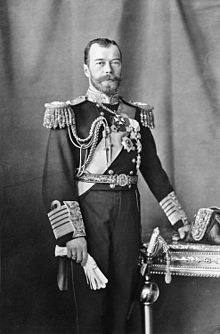 In 1861, Tsar Alexander II abolished serfdom, and eventually peasants could obtain land with individual title and hereditary rights. The Peasants’ State Bank granted loans at low rates of interest and the Russian economy grew to become the strongest in the world at the time. Since the government created the money, the interest reverted back to the treasury and this resulted in the lowest rates of taxation anywhere. During this period of state banking, there as no inflation and no unemployment.
In 1861, Tsar Alexander II abolished serfdom, and eventually peasants could obtain land with individual title and hereditary rights. The Peasants’ State Bank granted loans at low rates of interest and the Russian economy grew to become the strongest in the world at the time. Since the government created the money, the interest reverted back to the treasury and this resulted in the lowest rates of taxation anywhere. During this period of state banking, there as no inflation and no unemployment.
Education was free right up through university level (much like Libya until it recently underwent a similar fate). Russian universities were renowned for their high academic standards.
Tsar Nicholas II and other tsars before and after created a worker’s paradise unmatched throughout history.
“On November 7, 1917, the Rothschilds, fearful that replication of this extraordinary example of freedom and prosperity would destroy their malevolent banking empire, instigated and financed a Judeo-Bolshevik Revolution in Russia, which wrecked and ruined a wonderful country and resulted in the deaths by murder and starvation, according to Alexandr Solzhenitsyn, of 66 million innocent people.”—A History of Central Banking, Stephen Milford Goodson
Tsar Nicholas II was assassinated, along with his family in 1918.
Assassination of Huey Long (Sept. 10, 1935)
Lie: That the United States if a free country, with free speech guaranteed by the Constitution, with no repercussions.
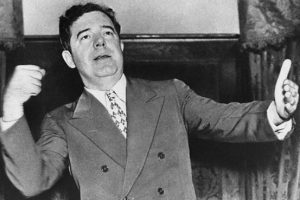 Huey Long Jr. was one of only two US senators to ever be assassinated while in office. Robert Kennedy was the other. A Democrat, he was an outspoken populist who denounced the wealthy and the banks and called for a “Share Our Wealth” program. Based upon the history of politicians who actively and visibly denounce central banks, it’s not difficult to imagine how might have been behind his demise. Long was shot a month after announcing that he would run for president.
Huey Long Jr. was one of only two US senators to ever be assassinated while in office. Robert Kennedy was the other. A Democrat, he was an outspoken populist who denounced the wealthy and the banks and called for a “Share Our Wealth” program. Based upon the history of politicians who actively and visibly denounce central banks, it’s not difficult to imagine how might have been behind his demise. Long was shot a month after announcing that he would run for president.
Start of World War II
Lie: Germany began World War II
Most people believe that Germany began World War II, but nothing could be further from the truth.
Poland was much more the aggressor in 1939, with atrocities against 1.5 million Germans living in Poland. Hitler tried to negotiate a settlement. However, on the orders of international bankers, at least 28 attempts at a settlement were all refused.
Germany’s independent monetary system let them wage war and almost win it against the allied powers. The was due to the nationalization of the Reichsbank in 1939, which gave Hitler total control over the monetary system of Germany, with no outside interest payments. They created their own money and a very vibrant economy. In so doing, Germany became a target, like other independent nations before and after it. If you get in the way of the central banking cartel, history tells us you’ll pay the price.
______________________________
Part 3 of “Three Hundred Years of Lies” is here.
______________________________
Sources: (links and more information on my recommended books page):
- Web of Debt, Ellen Hodgson Brown
- The Creature from Jekyll Island, G. Edward Griffin
- A History of Central Banking, Stephen Mitford Goodson
- The Public Banking Solution, Ellen Brown
- The Unified Cycle Theory, Stephen J. Puetz
- Climate, The Key to Understanding Business Cycles, Michael Zahorchak
- Tower of Basel, Adam Lebor
- Tragedy and Hope, Carroll Quigley
- Debt, the First 5,000 Years, David Graeber



